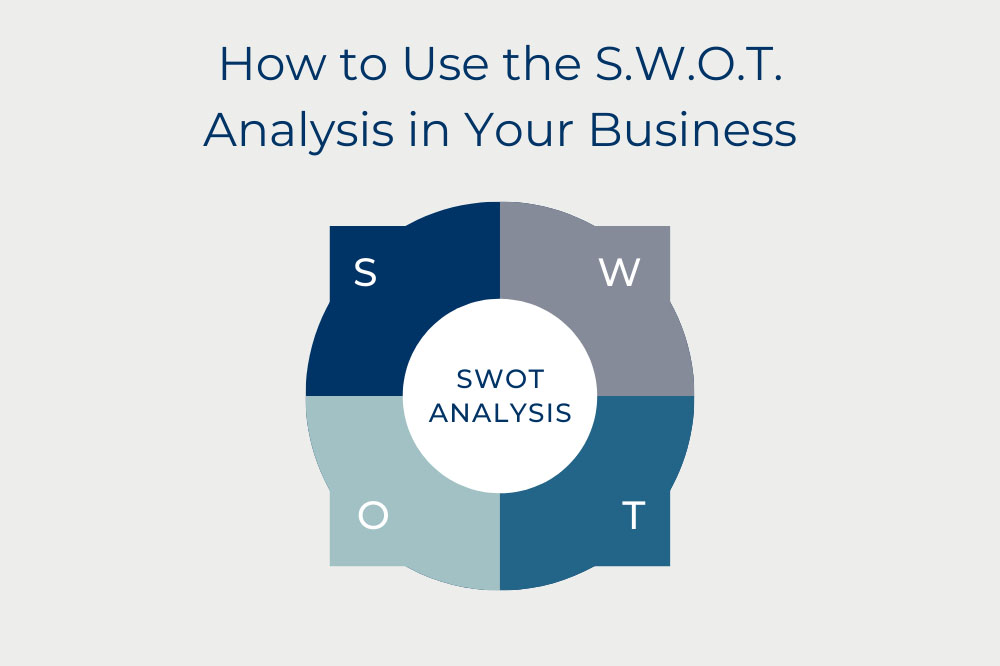You’ve heard it once and you’ll hear it again—how is it 2022? Every year, between December 30 and January 30, I do the same few things:
- Clear out my inbox (wouldn’t ZERO messages look lovely?)
- Prepare my taxes (overachiever much?)
- Organize the crap out of my office (stay tuned for a special blog on this…spoiler alert: color coding!!)
- Fill out a S.W.O.T. analysis
- Determine my S.M.A.R.T. goals
For those of you who have not had experience with a S.W.O.T. analysis, this is a great practice to evaluate your business pros, cons, opportunities, and liabilities. The acronym stands for Strengths, Weaknesses, Opportunities, and Threats and is a structured planning method—you know how I love structure and order (*swoon*).
I use S.W.O.T. as a way to analyze my current business and, more importantly, plan for future developments and strategies. Among the benefits are:
- Identifying potential problems — This is the business contingency plan. It’s kind of the worst-case scenario planning, which has only become more important since Covid. Are there new competitors opening? Impending law suits? A corporate restructuring? A new baby on the way (not that this is a “problem,” but it does change things)? So many facets of your business can be affected by so many things, so this is your opportunity to brainstorm the worst and make plans so your business will have the best outcome.
- Identify untapped potential — What lies ahead for your business? Do you have a strategic growth plan? Are you working ahead by at least 3-6 months? The key to continual growth and stimulation is to continually innovate. How can you capitalize on your strengths to create the best outcome for your business?
- Identify the best — Really look into what sets you apart as the best of the best. Your strengths are what make your business uniquely you, and will push you to higher profits—if you let them.
- Identify the worst — No one is perfect. By recognizing your weaknesses, you automatically set yourself up to make improvements. How can you change for the better if you deny that change needs to happen?
So how do you fill out a S.W.O.T. analysis? First, download my free worksheet HERE. This will help you organize your thoughts so they are more manageable, and more clearly laid out for later review.
Once you have downloaded the template, make a list within each section and ask yourself these questions:
Strengths
- What are your business (and personal) talents?
- How can you maximize your strengths?
- What do you bring to the business?
- What outside and inside resources do you have?
- Compared to your competitors, what do you do better?
- What parts of your business are strongest (i.e. social media, marketing, customer service, HR, etc.)
Weaknesses
- What do you do poorly? (for me, it’s answering the phone—I HATE it!)
- What do your customers complain about the most?
- What do you employees or contractors complain about the most?
- What do you, as the owner/management complain about the most?
- What do your competitors do better than you?
- How can you minimize your weaknesses?
Opportunities
- How can you use your strengths to work smarter, faster, or better?
- How are your needs changing? Has anything happened in the industry or community that needs addressing within your business?
- Are there technological advances that need to be instituted?
- Are there any new markets or products you can utilize?
- How are your competitors failing and how can you meet their customers’ needs?
- How can you take advantage of these opportunities?
Threats
- Are there any new products or services your competitors are implementing?
- Are there events or circumstances that are rendering your product/service obsolete?
- How is your cash flow and debt? Profits and Losses? Balance Sheets?
- Are your employees and contractors satisfied?
- Is there new competition?
- Do you have a high turnover rate?
- Are you clients satisfied?
- Are sales growing at an appropriate rate?
- Are your customers’ needs changing?
- How can you avoid these threats?
The Most Important Step
A list is just a list until you put it into action. What good would a to-do list be if all you did was write down the items and never cross anything off? Once you have completed your S.W.O.T. analysis list, you will need to devise an action plan. In a nutshell:
- Strengths need to be maintained, improved further, or leveraged.
- Weaknesses need to be lessened, remedied, or removed.
- Opportunities need to be prioritized, planned, and put into action as soon as possible.
- Threats need to be minimized, countered, or neutralized.
Like Chess, S.W.O.T. is a game of strategy. You must look at the entire board, plan ahead, and then plan ahead further to beat the competition. How can you use a strength to help minimize a threat? Will an opportunity you pursue open you up to new threats?
Think of this brainstorming session as a peak into your future. How well you prioritize and how creatively you plan can mean the difference between six or seven figures…between status quo and expansion…between taking out a loan or paying one off.
It’s a New Year’s Resolution roadmap for your business. Now let’s get going!
What are you most looking forward to in your business?
Download your FREE S.W.O.T. Analysis Guide HERE!

